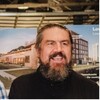Hello everyone We have a project in Uruguay in which our clients want to use a 350 tons centrifugal chiller with a 8.41 IPLV and 5.65 COP. Table 6.8.1C shows minimum efficiencies for this chiller are 6.40 IPLV and 6.10 COP. The proposed chiller does not meet the minimum COP requirements but exceeds by a lot the minimum IPLV requirements. Taking into account that the usual working point of a chiller is not at full power, could it be possible for this chiller to be accepted? Thank you. Agustin
You rely on LEEDuser. Can we rely on you?
LEEDuser is supported by our premium members, not by advertisers.
Add new comment
To post a comment, you need to register for a LEEDuser Basic membership (free) or login to your existing profile.



